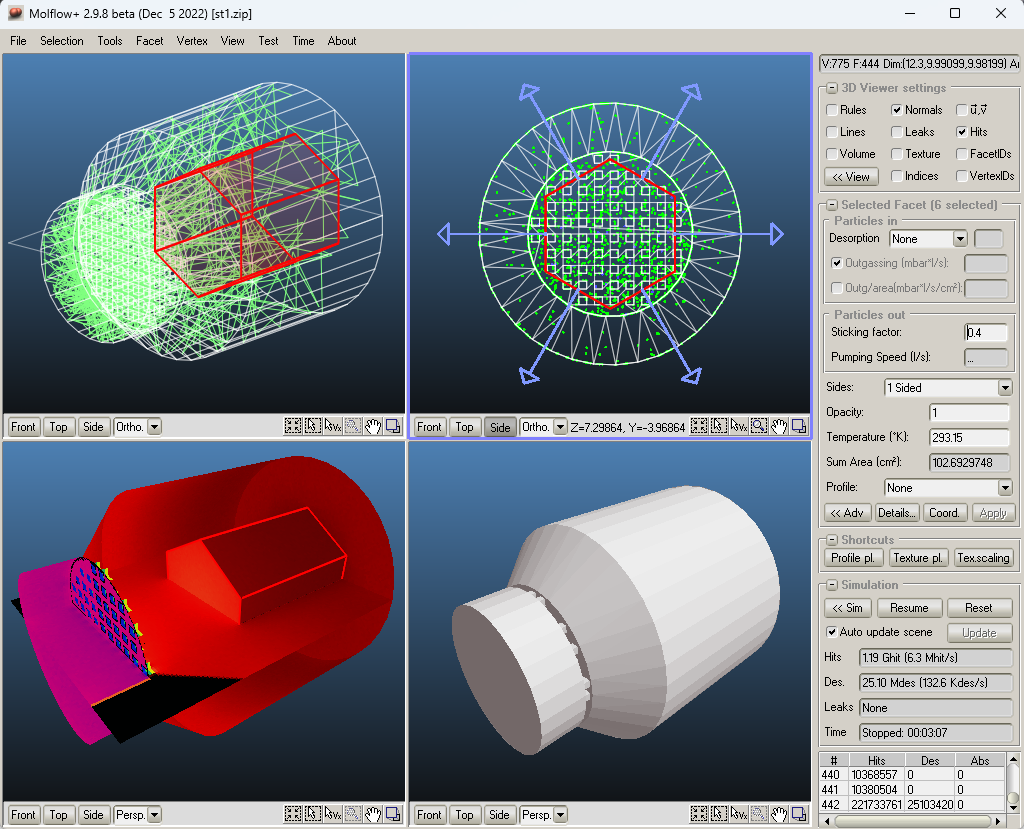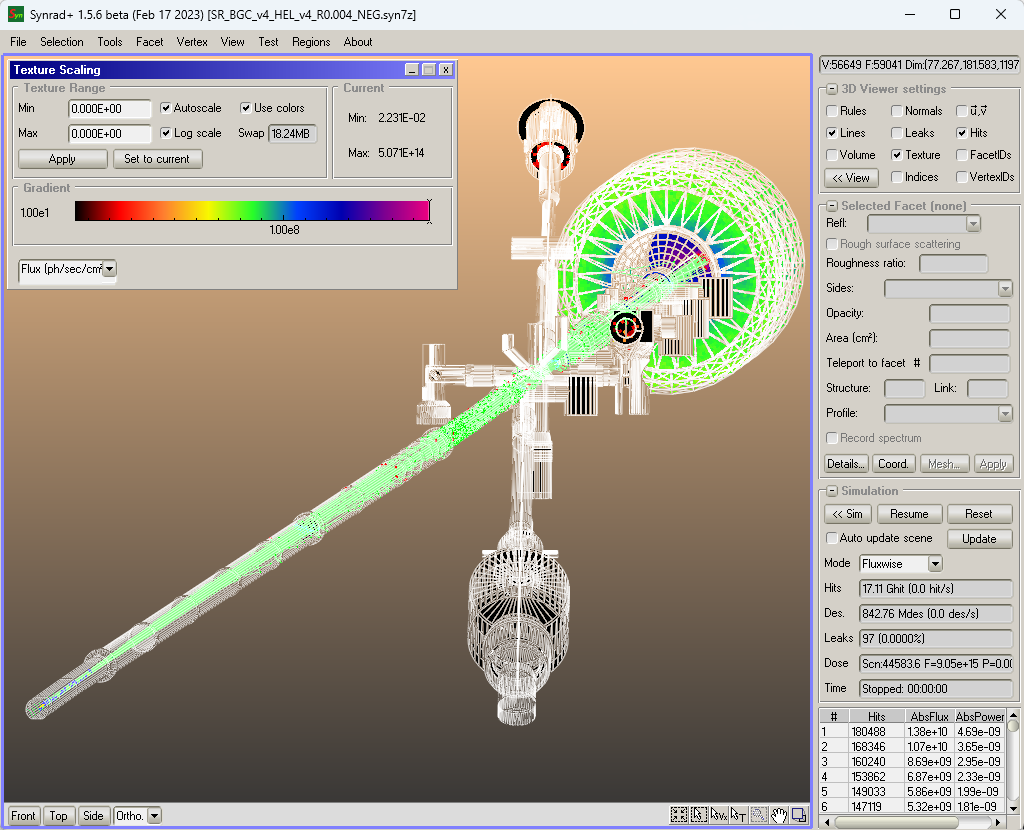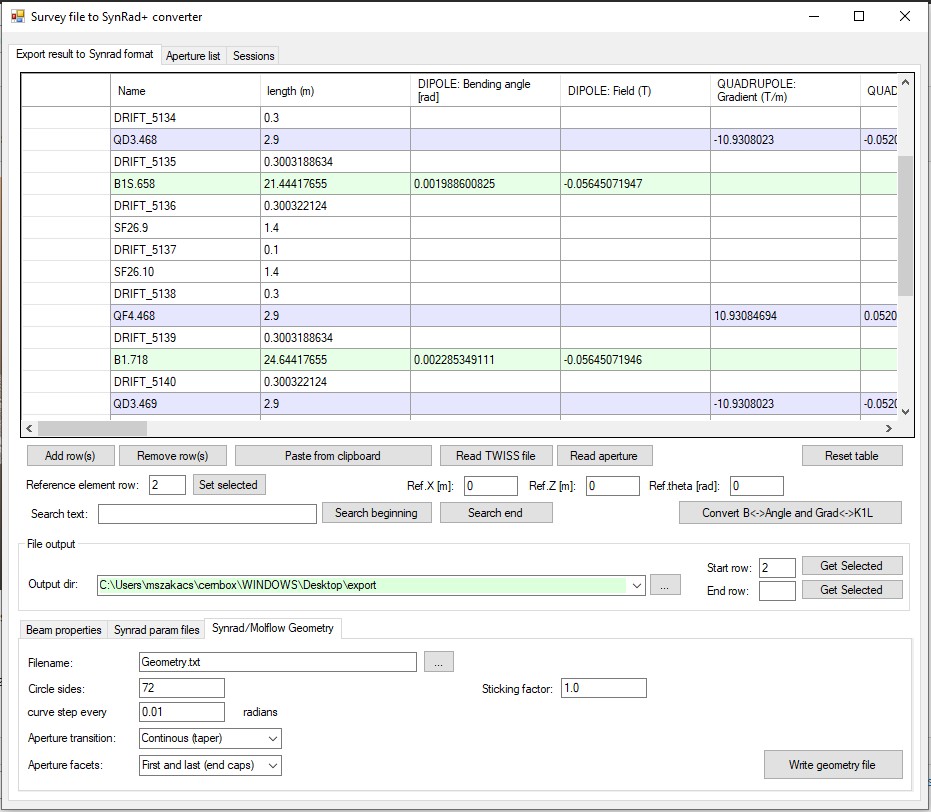About
MolFlow+
MolFlow+ allows you to calculate the pressure in an arbitrarily complex geometry when ultra-high vacuum condition is met. The name comes from molecular flow, the condition when the mean free path of molecules is so long compared to the geometry size that collisions can be neglected. In this case, particles fly independently, which makes this physics particularly suitable for Monte Carlo simulations. The first version of this program was written by Roberto KERSEVAN in 1990. In 2008 a new version called MolFlow+ was written, that uses the original algorithm in a modern environment. It uses OpenGL acceleration and can use multiple cores. Further improvements were added in 2012. Geometries can be imported from most CAD programs that support the STL file format.
SynRad+
SynRad+ is a mod of the previous program. Instead of molecules, it traces photons to calculate flux and power distribution on a surface caused by synchrotron radiation. The user can define magnetic regions where the trajectory of the beam is calculated. From this beam photons are emitted, and when they hit surfaces, their reflectance or absorbance is calculated, helping the design of machines where SR induced heat or gas desorption is important. It has been writtent in late 2012 and has been released to the public in 2013. The file formats are compatible with MolFlow+.
OpticsBuilder
OpticsBuilder is a helper to generate accelerator sequences (optics and geometry) for SynRad+, to avoid manual coordinate calculation. The input can be a user-typed sequence (one row per element) or imported from a MADX Twiss file.
Authors & Contact
Help and support
For support (bug reports and help with the codes), please open a post in the forum, which others may learn from, unless the geometry is confidential. For other matters, feel free to get in touch with us:
Original MolFlow and algorithm
- Roberto KERSEVAN - roberto.kersevan@cern.ch
Code and website
-
Marton ADY - marton.ady@cern.ch
-
Petar TRIFUNOVIC - petar.trifunovic@cern.ch
GUI framework and first MolFlow+ port
- Jean-Luc PONS - pons@esrf.fr
Students who contributed to the code
-
Tymoteusz MROCZKOWSKI (2023 to 2024)
-
Pascal BAHR (2019 to 2022)
Citation
If you publish results computed with our codes, we kindly ask you to include a reference to this IPAC'19 proceeding:
MolFlow+ reference
Recent developments of Monte-Carlo codes MolFlow+ and SynRad+
M. Ady, R. Kersevan
10th Int. Particle Accelerator Conf., Melbourne, Australia - doi:10.18429/JACoW-IPAC2019-TUPMP037
http://accelconf.web.cern.ch/AccelConf/ipac2019/papers/tupmp037.pdf
Keywords: CERN UHV vacuum simulator ultra high vacuum test particle monte carlo
License
GNU GPL v3.0
Copyright 2024, CERN and ESRF.
License summary
- You can download and use the codes for free, even in a commercial environment
- If you modify or redistribute the code or its parts, the license requires any derivative work to be distributed under the same (open-source) license
- If you publish results computed with our codes, we kindly ask you to include a reference to the IPAC'19 just above.
Everyone is permitted to copy and distribute verbatim copies of this license document, but changing it is not allowed.
This program is free software: you can redistribute it and/or modify it under the terms of the GNU General Public License as published by the Free Software Foundation, either version 3 of the License, or (at your option) any later version.
This program is distributed in the hope that it will be useful, but WITHOUT ANY WARRANTY; without even the implied warranty of MERCHANTABILITY or FITNESS FOR A PARTICULAR PURPOSE. See the GNU General Public License for more details.
Full license text: https://www.gnu.org/licenses/gpl-3.0.en.html
Open-source libraries used:
- SDL2
- Curl
- LibPng
- GCC
- 7-zip and lib7zip wrapper
- NativeFileDialog extended
- GTK3 on Linux.
- pugixml
- cereal
- fmt


